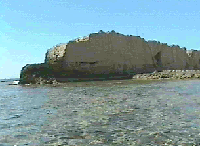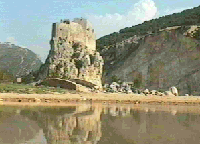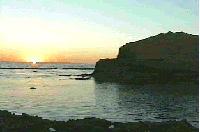 |
|
|
| It
is said that two chains of caves were discovered along the
path of Al Jawz river and it is believed that they were
settlements of the early Man. One of the chains and the most
famous exists at about a km from the outlet of Al Jawz river.
Plenty of axes, knives, drills, perforators in addition to a
large set of granite pieces were retrieved from these caves
which verifies the history of the early Man that dates back to
thousands of years B.C. |
|

|
|
|
This issue has
also been confirmed by the museum of granite and stony tools
whose documents were lost as it was transferred to one of the
french museums.
|
|
|
|
| Another
archaeologic site and a crusade ruin at Batroun is the castle
of Mousaylaha which is constructed on an isolated
massive rock with steep sides protruding in the middle of a
plain surrounded by mountains. It is believed that the castle
dates back to the middle ages. It consists of two floors with
an internal rectangular castle that can be reached by climbing
few broken stairs. The internal castle overlies a set of
pillars and has a well dug in its floor connected to canals
carved in the |
|

|
|
rocks. The central
room has two doors, they lead to the western section and the
eastern section which has a narrow sand stone staircase that
leads to the multisectionned upper floor. The walls of this
castle are thick and infiltrated with several scuttles used
for security of for defense. A good part of its ceiling and
the observation tower are demolished.
|
|
|
|
|
Of
the ruins of Batroun is a small pond engraved in a beach rock
in front of the phoenician wall. It is named the Pond of the
King's Daughter after a Phoenician princess
that used to bathe there.
|
|

|
|
|

|





